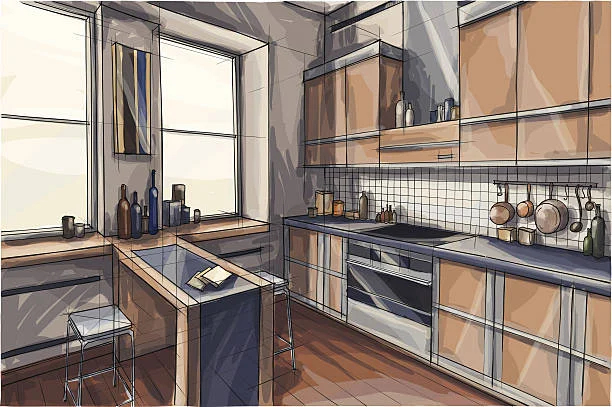There was a time when people thought bigger was automatically better. Bigger closets, bigger garages, bigger kitchens. But lately, homeowners are realizing that the secret to a truly functional home isn’t square footage—it’s intention. Small kitchens are having their moment, and it’s not a pity party for lack of space. It’s a design revolution built on purpose, flow, and personality.
The Luxury Of Limitations
There’s something freeing about designing within limits. It forces you to prioritize. You can’t have ten gadgets out on the counter, so you start asking what you truly use. You pick one good chef’s knife instead of a block of dull ones. You buy storage containers that stack neatly instead of wobbling towers of mismatched lids. And somehow, it feels more peaceful.
This kind of minimalism isn’t cold or clinical—it’s curated. Homeowners are gravitating toward soft woods, textured ceramics, and warm metals that add depth without clutter. Even appliances are getting a second look. The over the range microwave has quietly become a small-kitchen hero, freeing up counter space while blending in with the design. The newest models vent better, light the cooktop beautifully, and even offer smart reheat features that actually work. When every inch counts, a well-placed microwave isn’t a compromise—it’s a design choice that keeps the kitchen functional and polished.
The Power Of A Thoughtful Kitchen Layout
The phrase “thoughtful design” gets thrown around a lot, but in a compact kitchen, it’s everything. A good kitchen layout can make a 90-square-foot space feel twice its size. Designers are paying close attention to workflow—the classic triangle between the stove, sink, and fridge still matters, but now there’s nuance. Maybe the triangle becomes a line, or maybe a peninsula adds just enough prep space without cutting off traffic.
Lighting also plays a massive role. Instead of one harsh overhead fixture, layered lighting—under-cabinet strips, recessed spots, and pendant accents—can create warmth and depth. Even the smallest galley can look open if it’s lit with intention.
Cabinetry is getting smarter too. Floor-to-ceiling storage gives vertical payoff, while glass doors on upper cabinets trick the eye into seeing more space. Some homeowners skip upper cabinets altogether for open shelving that forces simplicity and adds a lived-in charm. The key is knowing where to stop. When you resist the urge to fill every inch, the room breathes.
Design That Feels Personal
Small kitchens lend themselves to storytelling. Because there’s less space to fill, every choice matters. That backsplash tile might be handmade. The cabinet hardware could be a thrifted score from a weekend market. These kitchens aren’t generic Pinterest copies—they’re personal statements.
There’s also a shift toward cozy imperfection. Instead of showroom polish, people want kitchens that feel like real life happens there—pasta water boiling over, cat napping on the stool, sunlight hitting the countertop just right. It’s the difference between a kitchen you admire and one you actually want to live in.
Open shelving with stacks of plates in mixed patterns. A tiny pot of basil by the window. Maybe even a small espresso setup tucked into a corner. It’s about creating a kitchen that works hard, yes, but also feels loved.
A New Kind Of Entertaining
Once upon a time, entertaining meant keeping guests out of the kitchen. Now, it’s the star of the show. Even in a smaller home, people gather around the stove to chat while something simmers. Designers are responding by adding features that make tight kitchens more social—fold-down tables, sliding doors that open to patios, or counters that double as serving spots.
Technology helps too. Smart ovens that preheat from your phone, voice-controlled lighting, and compact wine fridges bring convenience without taking over the aesthetic. The point isn’t to cram gadgets into every corner; it’s to make your space feel responsive to how you actually live.
Design With Heart
There’s a quiet honesty to a small kitchen done well. It doesn’t scream luxury, but it feels luxurious in how it serves you. Every shelf, drawer, and light fixture has a purpose. There’s beauty in that kind of restraint—a sense that the space knows exactly what it’s meant to do.
The modern kitchen isn’t about excess or perfection. It’s about warmth, flow, and being grounded in the everyday. Small kitchens prove that comfort and creativity don’t need a big footprint. They just need thought, care, and a designer—or homeowner—who understands that less really can mean better.
A Space That Works Like You Do
The kitchens leading this new wave aren’t bragging about square footage or marble slabs. They’re quietly efficient, effortlessly stylish, and designed for real life. That’s the heart of thoughtful design—building a space that’s as hardworking and adaptable as the people who live in it.
Don’t miss our spotlight pick—read this featured post curated just for you.







